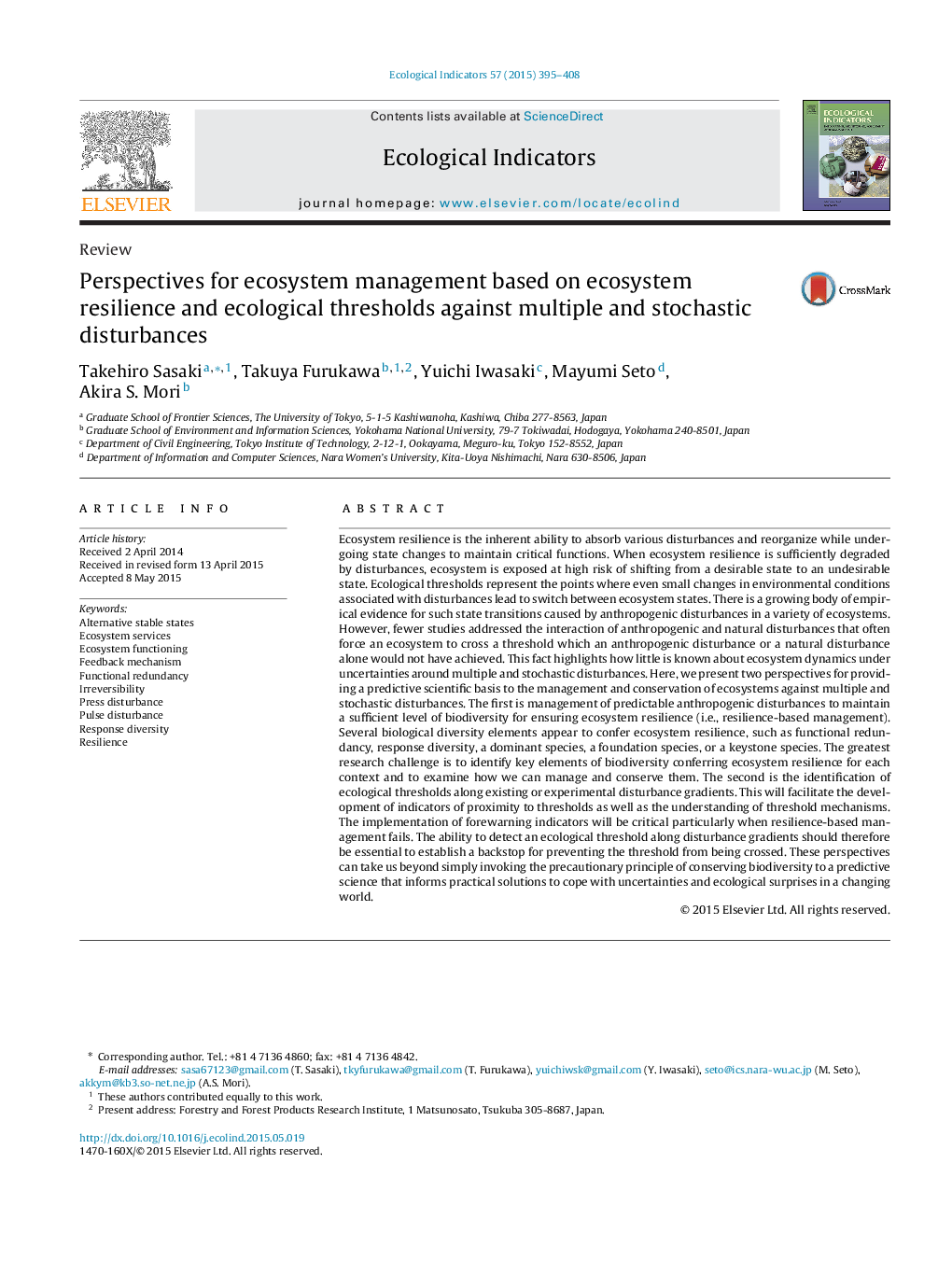| کد مقاله | کد نشریه | سال انتشار | مقاله انگلیسی | نسخه تمام متن |
|---|---|---|---|---|
| 6294695 | 1617144 | 2015 | 14 صفحه PDF | دانلود رایگان |

- We provided management perspectives by applying resilience and threshold concepts.
- We need to examine how a particular element of biodiversity confers resilience.
- Threshold identification is critical as a backstop for resilience-based management.
- It is time to move beyond a precautionary principle toward a predictive science.
Ecosystem resilience is the inherent ability to absorb various disturbances and reorganize while undergoing state changes to maintain critical functions. When ecosystem resilience is sufficiently degraded by disturbances, ecosystem is exposed at high risk of shifting from a desirable state to an undesirable state. Ecological thresholds represent the points where even small changes in environmental conditions associated with disturbances lead to switch between ecosystem states. There is a growing body of empirical evidence for such state transitions caused by anthropogenic disturbances in a variety of ecosystems. However, fewer studies addressed the interaction of anthropogenic and natural disturbances that often force an ecosystem to cross a threshold which an anthropogenic disturbance or a natural disturbance alone would not have achieved. This fact highlights how little is known about ecosystem dynamics under uncertainties around multiple and stochastic disturbances. Here, we present two perspectives for providing a predictive scientific basis to the management and conservation of ecosystems against multiple and stochastic disturbances. The first is management of predictable anthropogenic disturbances to maintain a sufficient level of biodiversity for ensuring ecosystem resilience (i.e., resilience-based management). Several biological diversity elements appear to confer ecosystem resilience, such as functional redundancy, response diversity, a dominant species, a foundation species, or a keystone species. The greatest research challenge is to identify key elements of biodiversity conferring ecosystem resilience for each context and to examine how we can manage and conserve them. The second is the identification of ecological thresholds along existing or experimental disturbance gradients. This will facilitate the development of indicators of proximity to thresholds as well as the understanding of threshold mechanisms. The implementation of forewarning indicators will be critical particularly when resilience-based management fails. The ability to detect an ecological threshold along disturbance gradients should therefore be essential to establish a backstop for preventing the threshold from being crossed. These perspectives can take us beyond simply invoking the precautionary principle of conserving biodiversity to a predictive science that informs practical solutions to cope with uncertainties and ecological surprises in a changing world.
Journal: Ecological Indicators - Volume 57, October 2015, Pages 395-408